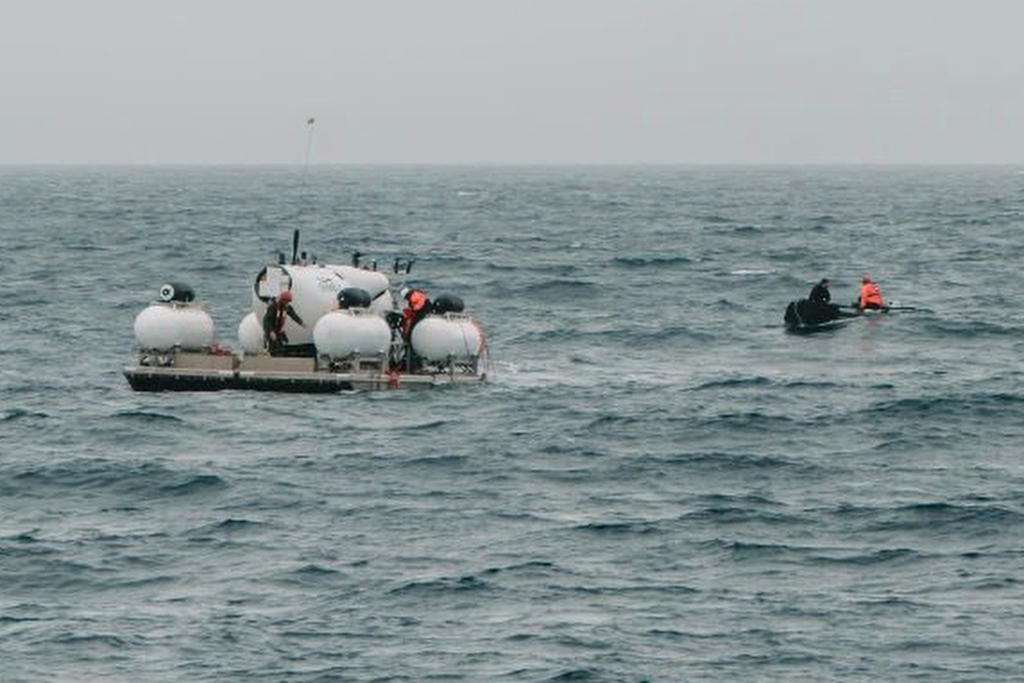Titanic submarine searchers detect ‘banging’ near area where submersible vanished
A Canadian airplane aiding in the search for the missing Titanic-bound submersible recently detected “banging” every 30 minutes in the area where the vessel lost radio contact with its surface ship.
Details of the potential signs of life aboard the OceanGate Expeditions’ submersible were included in internal emails sent to the Department of Homeland Security and separately confirmed early Wednesday by the US Coast Guard.
The emails, obtained by Rolling Stone, did not specify when the Canadian maritime surveillance and patrol aircraft picked up on the banging.
But a Tuesday email obtained by the outlet from The Explorers Club, of which one of the passengers aboard the submersible is a member of, noted the “tapping sounds” were detected around 2 a.m. local time “implying crew may be alive and signaling.”
“RCC Halifax launched a P8, Poseidon, which has underwater detection capabilities from the air,” read the email updates sent to DHS.
“The P8 deployed sonobuoys, which reported a contact in a position close to the distress position. The P8 heard banging sounds in the area every 30 minutes. Four hours later additional sonar was deployed and banging was still heard.”
The US Coast Guard also revealed “underwater noises” were discovered by a Canadian P-3 aircraft in the search area, though it was unclear when.
As a result of the development, a remotely operated underwater vehicle (ROV) was rerouted to the vicinity where the sounds were heard, but so far the searches have come up empty, the Coast Guard said.
“The data from the P-3 aircraft has been shared with our U.S. Navy experts for further analysis which will be considered in future search plans,” the Guard wrote in the brief update posted on Twitter.
The president of The Explorers Club, Richard Garriott, released a statement Tuesday night saying that the banging sounds have ignited a “much greater confidence” that the missing vessel will be found.
“There is cause for hope, based on data from the field — we understand that likely signs of life have been detected at the site,” Garriott said in a statement.
Neither the DHS nor the Coast Guard immediately responded to The Post’s request for comment.

The DHS did not immediately respond to The Post’s request for comment.
Though rescuers are working to determine the location of the “banging” sounds, they are confident they originated from the same area of Newfoundland waters where the Titan and its five-person crew disappeared on Sunday morning.
The submersible — carrying OceanGate Expeditions’ founder and CEO Stockton Rush, French Titanic expert Paul-Henri Nargeolet, British billionaire Hamish Harding, and Pakistani businessman Shahzada Dawood and his 19-year-old son — lost contact with its support ship one hour and 45 minutes into its 8-hour trip.
Both Nargeolet and Harding are members of the Explorers Society.

The USCG said Tuesday afternoon that the crew likely only had 41 hours of breathable oxygen left.
If successful, the rescue mission would be considered the deepest ever.
Read the full article Here






